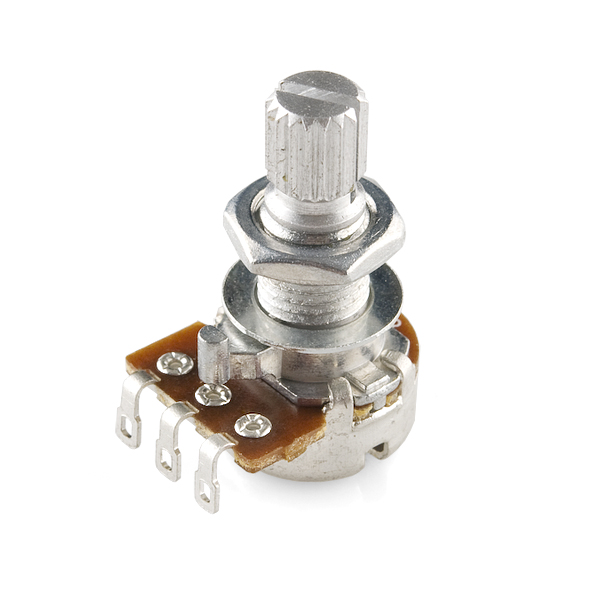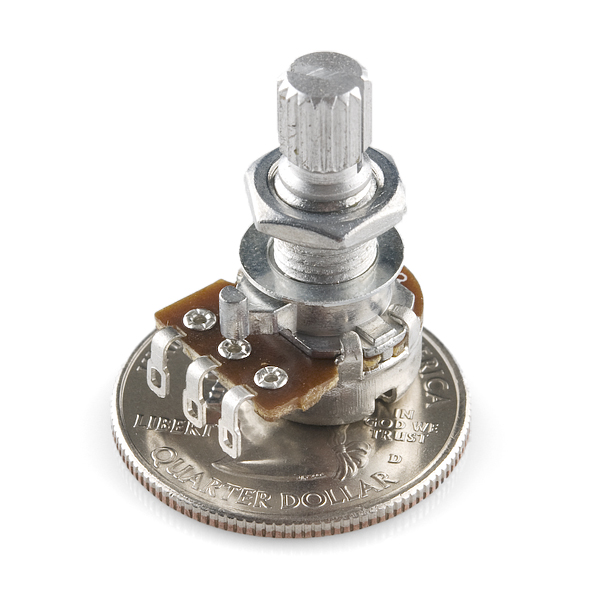Rotary Potentiometer - 10k Ohm, Logarithmic
An adjustable potentiometer can open up many interesting user interfaces. Turn the pot and the resistance changes. Connect VCC to an outer pin, GND to the other, and the center pin will have a voltage that varies from 0 to VCC depending on the rotation of the pot. Hook the center pin to an ADC on a microcontroller and get a variable input from the user!
This pot has a 1/4" mounting diameter and has a 10K logarithmic taper. Check the datasheet for dimensional drawings.
Rotary Potentiometer - 10k Ohm, Logarithmic Product Help and Resources
Core Skill: Soldering
This skill defines how difficult the soldering is on a particular product. It might be a couple simple solder joints, or require special reflow tools.
Skill Level: Noob - Some basic soldering is required, but it is limited to a just a few pins, basic through-hole soldering, and couple (if any) polarized components. A basic soldering iron is all you should need.
See all skill levels
Core Skill: DIY
Whether it's for assembling a kit, hacking an enclosure, or creating your own parts; the DIY skill is all about knowing how to use tools and the techniques associated with them.
Skill Level: Noob - Basic assembly is required. You may need to provide your own basic tools like a screwdriver, hammer or scissors. Power tools or custom parts are not required. Instructions will be included and easy to follow. Sewing may be required, but only with included patterns.
See all skill levels
Comments
Looking for answers to technical questions?
We welcome your comments and suggestions below. However, if you are looking for solutions to technical questions please see our Technical Assistance page.
Customer Reviews
No reviews yet.




Also, are these true Logarithmic pots, or simulated logarithmic pots?
LOGARITHMIC POTS!!!
Ive been looking for one forever, but they were always out of stock.
These are reverse logarithmic pots - C10K. Is there any way to order A10K pots?
unlikely mate,
"A logarithmic taper potentiometer has a resistive element that either 'tapers' in from one end to the other, or is made from a material whose resistivity varies from one end to the other. This results in a device where output voltage is a logarithmic function of the mechanical angle of the potentiometer.
Most (cheaper) "log" potentiometers are actually not logarithmic, but use two regions of different resistance (but constant resistivity) to approximate a logarithmic law. A logarithmic potentiometer can also be simulated with a linear one and an external resistor. True logarithmic potentiometers are significantly more expensive." - wikipedia